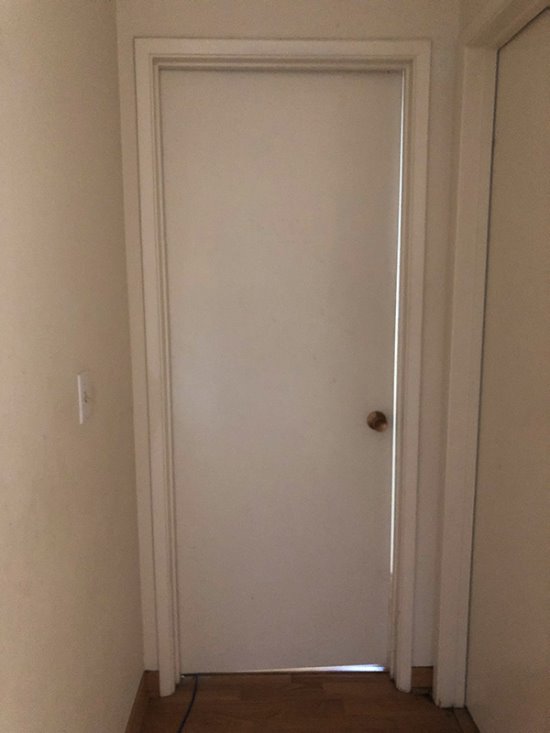
| ||||||
The soil in the Bay Area is pretty shifty. Besides the movement from seismic events, the difference in rainfall between El Ni?o and drought years causes the hillsides to almost imperceptibly shift up and down as the soil swells and contracts with moisture, causing door frames to become less than square and start to stick and bind.
A frequent item on the handyman to-do list is a sticky door or window. Typically, my clients will ask me to "trim the door down where it sticks." Trimming the door might make it visibly out of square when the foundation shifts back the other way, leaving an uneven gap at the top or side of the frame. Given that, I like to try a few other tricks first.
For a slightly sticky door, sometimes lubricant can make it smooth without damage to the door or frame. I rub paraffin wax on the places that bind with surprising success. Sometimes the problem is not from a shift in the foundation, but rather a shift in the frame. I always check to see if the hinge screws have come loose. In some cases, simply tightening the screws will re-align the door. A few times, I have found that the owner uses door-hanging hooks to hold bathrobes or towels on bathroom doors. The additional weight can pull the whole door frame slightly out of alignment. I replace one or two hinge screws with longer screws to pull the frame back into alignment without trimming the door. I also try the "bigger-hammer-approach." Using a block of wood and a large hammer, I tap firmly on the door frame where it binds and move the frame back into alignment. All these solutions can work in a few minutes without messy sanding or trimming that permanently alters the shape of the door.
A similar and related complaint is that the door has stopped latching. My technique is to grab a flashlight, close the door, and look closely at where the latch is in relation to the strike plate. (The strike plate is that little bit of metal on the frame side of the door that keeps the lock from damaging the trim.) Sometimes adjusting the door by tightening the hinge screws can make the latch catch. I also try using a metal file on the inside edge of the strike plate to see if the latch is just a little high or low. Last resort, when the latch is way out of alignment, I use a wood chisel and move the strike-plate up or down a quarter of an inch. This requires patching the woodwork where the latch was. Some doors in the Bay Area will shift up and down with the seasons and you will find screw holes of the higher and lower settings that previous owners have made.
Sticky doors and windows are a small price to pay for living here in these beautiful hills and valleys and these tips might remedy some of the associated nuisance. Best wishes for plumb doors and windows to you.

Reach the reporter at:
